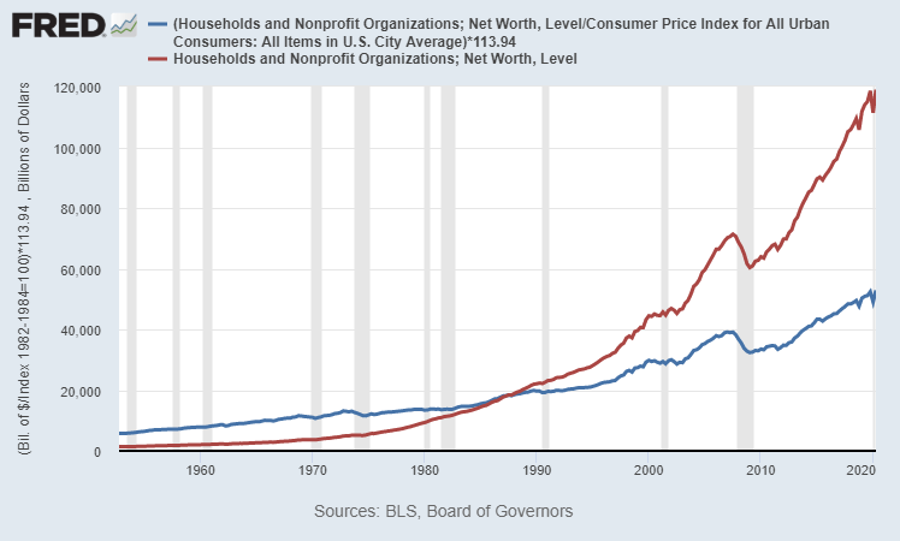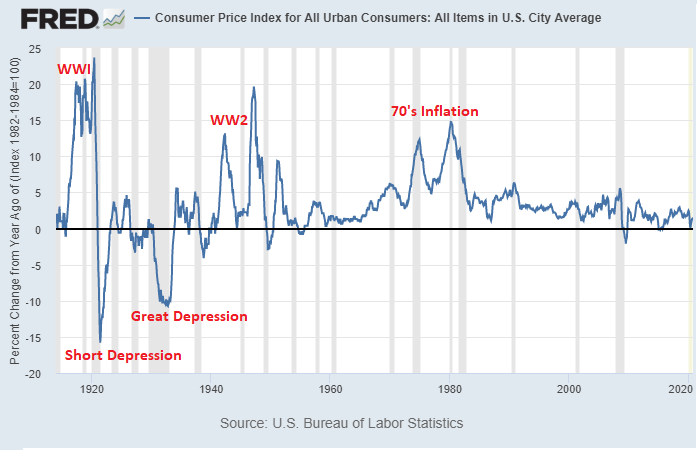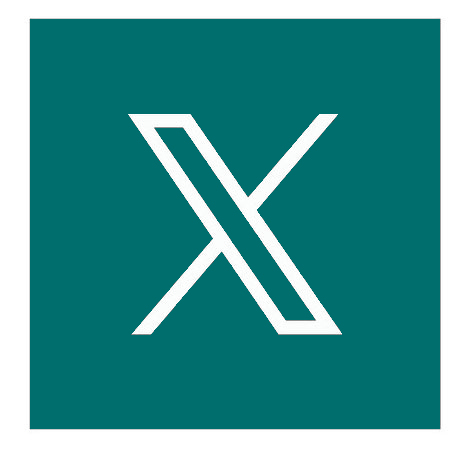The far-reaching impacts of the COVID-19 pandemic and talks of legislation changes under the new President elect have many Americans worried about their financial health this year. Adding to these concerns are speculation about where we can expect inflation in the near future.
However, what many individuals fail to account for in these discussions is the types of inflation that we can experience. Inflation as a concept isn’t always black and white, inflation or deflation. There are multiple types of inflation that can have different outcomes on our lives and our investments.
The three main types of inflation are monetary inflation, asset price inflation, and consumer price inflation.[i]
Monetary Inflation
Monetary inflation refers to the expansion of the broad money supply. Examples of monetary stimulus occurred throughout the past decade and most recently in 2020 with Global Central Banks injecting trillions of dollars into the system globally.[ii] The broad money supply is measured by the amount of currency in circulation at any given time.[iii] Currently, the broad money supply in the US is about $19.2 trillion. [iv]
Asset Price Inflation
Asset price inflation is when the price of goods or assets such as stocks, bonds, real estate, fine art, and luxury items increase and rise above their actual value over time.[v] Collectively in 2020, many asset prices have been reaching new all-time highs. The price of equities and bonds suggest significant overvaluation this year and for the past few years, in fact (Figure 1).

Source: US Bureau of Labor Statistics https://www.bls.gov/cpi/ December 2020
The result? Total household wealth reached nearly $119 trillion by the end of the quarter. This new high is due to the sharp rebound in equity prices that occurred through Q2 as well as the surge in housing prices and accelerated growth of the broad money supply. This, of course, can be partially attributed to the trillions of dollars the US governments transferred to the consumers in stimulus checks, unemployment benefits, PPP loans or grants, and corporate assistance, as well as recapitalizing the financial system.
Consumer Price Inflation (CPI)
Consumer price inflation refers to the increase in price of everyday goods and services. This indicator covers goods and services from food and housing to medical costs and transportation. CPI is difficult to measure since no two individuals buys the same goods or procures the same services, but nonetheless serves as a way to measure the increase in price on consumer goods.
This is the typical inflation you learn about from your parents when they tell you that they used to be able to buy a hamburger for a quarter, but now that same hamburger costs $5. Same for other items such as gas, cars, clothes, and the many other things we buy day in and day out. Or you may experience this type of inflation if your computer breaks and it costs you 15% more to replace it with the identical computer 18 months later.[i]
Historically, from the CPI perspective, we have not experienced a deflationary period since 2008 and the most notable example during the Great Depression between 1930-1933.[ii] Currently, CPI inflation is relatively low. We had a deflationary scare in the market selloff during March 2020, which was quickly reversed due to strong Central Bank and Congressional interventions.[iii]

Source: US Bureau of Labor Statistics https://www.bls.gov/cpi/ December 2020
How the Types of Inflation Intersect in This Economic Environment
By analyzing historical data and trends, we can extrapolate information that may clue us in to whether we will face an inflationary or deflationary period in the near future—an indicator that helps economists establish which asset classes might outperform others.
We believe this is the type of environment we are looking at right now: the broad money supply is rising and individual net worth is also rising while interest rates remain low.
We also believe this ultimately means that individuals may find themselves with extra cash they will want to invest. Typically, this type of cash in hand situation causes investors with plenty of cash to start buying financial assets, such as stocks, bonds, gold, luxury items, fine art, antiques, collectibles, and real estate.
The inherent scarcity of these items creates a supply-and-demand imbalance that will likely push asset prices higher. When the money supply goes up while interest rates stay low, the prices of financial assets tend to do very well.[i]
Environments of high asset price inflation but relatively low consumer price inflation often result in a high concentration of wealth in the upper class, such as occurred in the 1920s and the past decade.[ii]
If you have questions about inflation or concerns about the direction these indicators may be going, we encourage you to reach out to us at any time. The advisors as URS Advisory are always eager to answer your most pressing financial questions. Schedule a conversation with us today to learn more about our retirement planning and wealth management services.
[1] https://seekingalpha.com/article/4389305-3-types-of-inflation-and-how-impact-your-portfolio 18 December 2020
[1] https://home.kpmg/xx/en/home/insights/2020/05/central-banks-respond-to-pandemic.html 18 December 2020
[1] https://www.economicshelp.org/blog/glossary/broad-money/ 18 December 2020
[1] https://fred.stlouisfed.org/series/M2 22 December 2020
[1] https://www.investopedia.com/ask/answers/032715/what-difference-between-assetprice-inflation-and-economic-growth.asp 18 December 2020
[1] https://seekingalpha.com/article/4389305-3-types-of-inflation-and-how-impact-your-portfolio 18 December 2020
[1] https://www.investopedia.com/ask/answers/040715/were-there-any-periods-major-deflation-us-history.asp 9 December 2020
[1] https://www.usatoday.com/story/money/2020/05/03/coronavirus-us-deflation-falling-prices-new-economic-risk/3070084001/ 18 December 2020
[1] https://www.investopedia.com/articles/05/012005.asp 18 December 2020 [1] https://seekingalpha.com/article/4389305-3-types-of-inflation-and-how-impact-your-portfolio 18 December 2020


